| Please access the following URL if you want to secure using SSL. All pages in the site will be secure pages. |
https://secure02.blue.shared-server.net/www.fish-food.co.jp/message english 8.2022.html |
Welcome to FISH FOOD TIMES
Aug. 2022 issue No.224

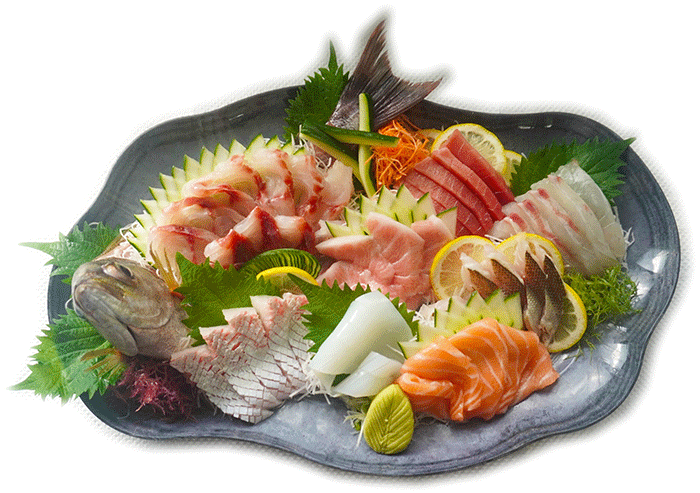
Omotenashi Syunsen assorted sashimi
The 3rd Obon Festival under the Covid-19 pandemic
In July, the number of people infected with the new coronavirus type BA5 surged, and in the week at the end of July, the number of infected people in Japan reached 970,000, which was the highest number in the world for that week. However, even in this situation, the Japanese government is not going to issue movement restrictions based on priority measures such as preventing the spread of the virus, as it did before. Rather than being bound by the law, it is an attitude that each individual should be careful and take measures to prevent infection. However, it is said that the suspension support money and benefits for the new coronavirus infectious disease have been postponed until the suspension period from June to September 2022.
This is just my guess, but I think: That is, in Japan, where the cumulative number of people infected with the new coronavirus has already exceeded 12 million, the government is expecting the effect of "herd immunity" as a last resort.
Herd immunity, according to the Ministry of Health, Labor and Welfare,
Infectious diseases spread when pathogens (such as viruses or bacteria) infect people who have no immunity to them. If more than a certain percentage of the population has immunity to a certain pathogen, even if an infected patient appears, it will be difficult for others to be infected. This will stop the spread of infectious diseases and indirectly protect people who do not have immunity from infection. This state is called herd immunity, and the whole society will be protected from infectious diseases. Depending on the type of infectious disease, the proportion of people with the necessary immunity to obtain herd immunity varies. Also, depending on the vaccine, even if it is effective in preventing aggravation by vaccination, it is poorly effective in preventing infection, and no matter how many people are vaccinated, the effect of herd immunity may not be obtained. It is not known whether the new corona vaccine has the effect of herd immunity, and it is thought that it will take time to find |
|---|
In this case, even if a certain number of people are infected with the new coronavirus, if it is within the range assumed in advance, it may be left as it is, and if it exceeds the assumption, another countermeasure may be considered. do not have. I can't help but feel that the Japanese government is guiding people to live "with corona" instead of forcibly enforcing "zero coronavirus" like China.
During last year's Obon period, people's behavior was clearly different from that of two years ago due to the emergence of something like "getting used to the coronavirus," which has continued for a long time since the beginning of the year before last. And it seems that the behavior pattern is a little closer to that of the Obon three years ago, but what will happen to the Obon period this year, which is the third year of the corona misfortune? The spectacle of the mass migration of ethnic groups like before would be very impossible. However, if there are no legal restrictions such as "priority measures to prevent the spread of infection", I think that each person will be active during the vacation while taking maximum measures to prevent infection, within the scope of self-responsibility.
As of July 27, the number of reserved seats on trains of JR companies around the time of Obon is 220% at the lowest and 326% at the highest, compared to 2021, even though there are more than two weeks until Obon. Two to three times as many people as last year are thought to be planning to travel to various places, mainly to return to their hometowns.
As of July 27, Okinawa Prefecture had the highest number of new infections per 100,000 people per week at 2,210.33, the highest in Japan. Okinawa Prefecture is far ahead of Osaka Prefecture, which has the second largest number of people, with 1,553.84 people. However, it seems that many tourists from all over the country are still heading to Okinawa, and due to the Covid-19 pandemic, the rental car company has drastically reduced the number of vehicles owned, so tourists cannot rent a car. In some cases, there is a 100-day waiting list for cancellations.
Originally, the way people spend their Obon holidays has changed considerably in recent years, but with the corona pandemic as an opportunity, it seems that this is about to change dramatically. For food supermarkets and fish departments, which have expected large sales as two major events of the year along with the year-end and New Year holidays, the amount of sales in these sales seasons is so important that it influences the annual settlement of accounts. It will be very important to find out what will happen to the Obon sales season from now on.
The level of importance of the Obon shopping season differs greatly between city center location type supermarkets and local location type supermarkets. The big difference is that until now, city center location type supermarkets during the Obon period have become rather idle, while local location type supermarkets have become a major event of the year on par with the year-end and New Year sales season. However, due to the influence of the corona pandemic, the spectacle of mass migration from the city to the countryside, called the mass migration of ethnic groups, has disappeared, and the balance of importance has changed significantly. Sales at city center location type supermarkets did not drop significantly during the Obon period, and sales at local location type supermarkets did not increase as explosively as they have in the past. This has been the phenomenon for the last two years.
How will you fight this year's Obon sales battle?
The number of people infected with the new coronavirus is increasing at a tremendous rate. However, with the Obon shopping season right in front of us, the Japanese economy would be thrown into chaos if we were to issue action restrictions at this stage as priority measures to prevent the spread of the virus. It probably won't happen, and I don't think it will.
It can be inferred that if the direction is basically to demand actions based on the premise of self-responsibility of each citizen, people will not change their current action plans significantly. Based on this premise, local supermarkets, which have generated large sales during the Obon season, may be able to plan sales that exceed those of last year.
Expressed numerically, local supermarkets can be expected to achieve at least 100% year-on-year sales growth. In particular, stores that have strong characteristics for seasonal events should be able to plan for double-digit sales growth without any problems. In other words, this year's Bon season can be a bullish sales plan, with the exception of city center location type supermarkets.
However, it is a little difficult for the marine products division to plan sales this year because the price of imported frozen fish and cultured fish has risen significantly compared to last year, and it is necessary to take this point into consideration when planning sales. be. If the amount of raw materials used for sashimi and sushi is the same as last year, the markup ratio will fall unless the selling price is raised. Also, if the selling price line is the same as last year's strategy, it should reduce the amount of raw materials used and reduce the size of the standard.
For example, consider the following example. This is an 8-item serving, assuming sales during the Bon sales season. The sashimi ingredients in this are just ordinary farmed fish and thawed fish that don't look any different, and it's not particularly attractive, it's a very ordinary sashimi platter sold at any supermarket.
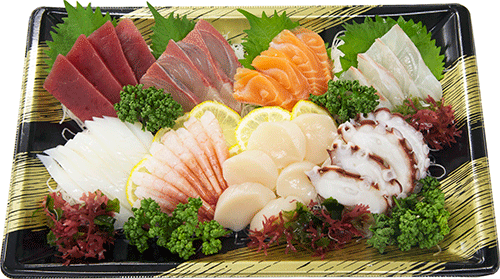
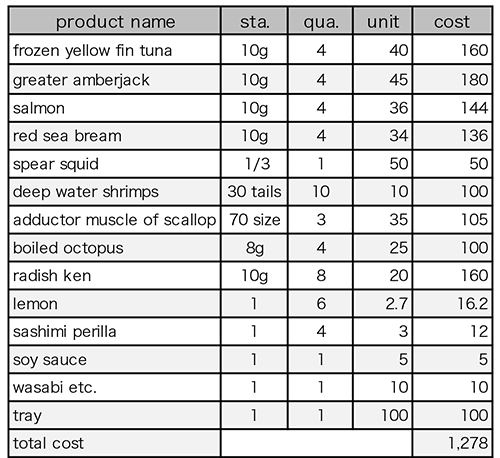
Even with this assorted sashimi 8 pieces that can not be differentiated at all, the estimated cost calculated at the current market price is 1,278 yen. This table may differ from the purchase cost of the company you belong to, but please forgive me that this calculation table is a hypothetical version that ignores the circumstances of individual companies.
It is likely that the selling price will settle at 1,980 yen even if it is cheap, and the markup ratio in that case will be 35.5%. A company that does not allow a sashimi markup ratio of 40% or less will end up with a selling price of 2,200 yen, which exceeds 2,000 yen.
Next, let's take a look at a high-quality example that has added value that is typical of the Obon season.
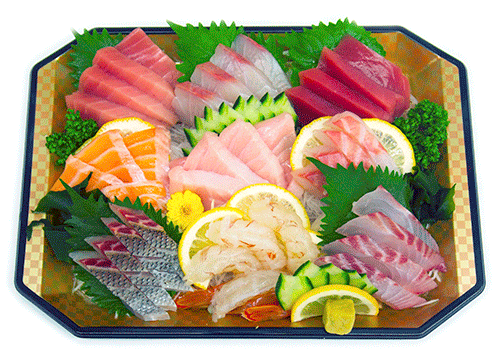
This is not an 8-point pattern, but since there is no suitable image for comparison with the same pattern, a 9-point pattern is used.
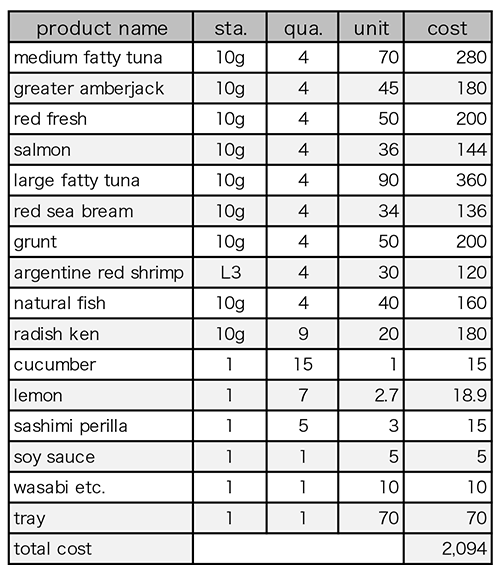
Since this sashimi contains two kinds of natural raw fish, I think that these can be calculated by replacing them with scallops and boiled octopus. In that case, if you calculate that it will be 155 yen cheaper, you can calculate a total of 1,939 yen. In the case of a cost price of 2,094 yen, the selling price is calculated to be 3,500 yen or more assuming a markup ratio of 40% or more. And in the case of a cost price of 1,939 yen, if the markup ratio is 40%, the selling price may be about 3,280 yen, but with a little effort, it is possible to achieve a markup ratio of 34.9% at 2,980 yen.
The question is whether or not the customer will accept that the selling price for nine assorted sashimi, which includes large fatty and medium fatty tuna, will be around 3,500 yen. It will be important whether it is able to demonstrate its technical capabilities suitable for the selling price, or whether not.
Both the 8 kinds of assorted sashimi in the image above and the 9 kinds of assorted sashimi are made according to certain rules. For this reason, even if there are differences in technical goods and bad things, if another person follows the rules, there is rationality that similar sashimi can be made. It is a so-called manual, and it is no exaggeration to say that the fish departments of supermarkets are based on this premise.
However, sashimi, which is the flower of the fish market, is sometimes standardized in an extreme form. In particular, some supermarkets of a certain size or larger that have a large number of stores implement thorough efficiency and labor saving by delivering sashimi produced intensively the day before to the store the next day for sale. Customers should not think, "That sashimi was delicious, so I will definitely buy it again." On the other hand, in addition to the recent surge in raw material prices for marine products, sashimi that feels relatively expensive due to the added center cost will probably make people think, "I will never buy from that store again."
Recently, the sales of seafood departments in supermarkets have been sluggish, and the composition ratio of in-store sales has been overtaken by the delicatessen departments, leading to a long-term decline trend in which their presence is steadily fading. This is fundamentally a self-inflicted result of such corporate policies, but the manager's escape excuse is the word "Sakanabanare" (the Japanese are avoiding eating fish).
There are facts that prove that part of the responsibility that invited such things was in their own thoughts and actions. It is the fact that customers pass the nearby rational, efficient and labor-saving stores and spend 30 minutes or even an hour going to the popular fish counters to shop. Such a phenomenon is occurring not only in the Kanto and Kansai regions but also in other parts of the country, and there is a growing tendency for fish sales floors to concentrate on highly rated shops.
Heart of Omotenashi
During the Obon period, when relatives, brothers and sisters gather, the criteria for deciding where to buy sashimi for the dining table are based on what they experience and feel there in their daily lives. be. Whether or not the fish department you belong to is listed as one of the candidates for that option, you can judge to some extent the level of support, but in the industry this is called a "business report card".
I'm sorry for this space, but let me brag a little here. Currently, the number of places where I teach is extremely small, and I will refrain from giving specific numbers. During the Obon and year-end and New Year sales seasons, the stores I teach receive a large number of pre-orders for big assorted sashimi and sushi in prices ranging from ¥3,000 to ¥9,800. For this reason, there are only places that have a big problem as to how to deal with them. In other words, sashimi and sushi have a good reputation, and the customer's report card is probably close to 5.
These stores are not moving in the direction of promoting rationalization, efficiency, and labor saving, but on the contrary, they are moving with the idea of ``how to realize high-quality products on the sales floor and how to increase customer satisfaction.'' In the future, shops with this kind of thinking should survive, and in fresh food, we have already entered an era where it is difficult to build a business based on the old idea of selling single items in large quantities or selling at low profit.
I can't announce what kind of products the store makes and sells at this point. However, on July 16th (Saturday), I invited an old friend and acquaintance to my office/separate house and had an "Omotenashi" stay with an open-air bath. Since there is an image of big assorted sashimi created at that time, I would like to introduce this as one that matches the direction of the author's teaching.
It is the following image used for the opening image.
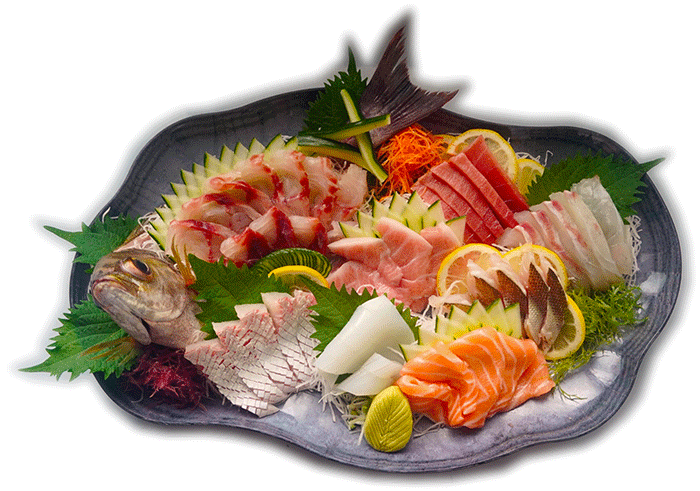
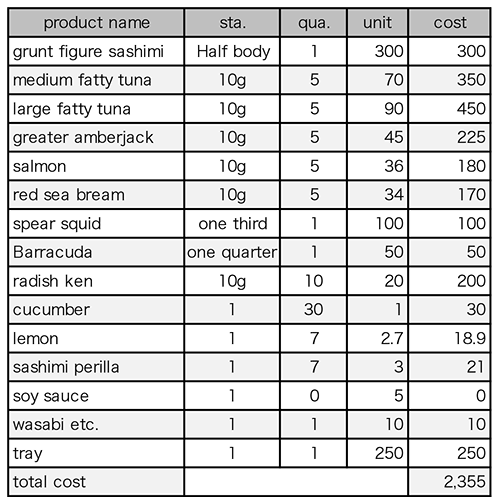
In addition to this assorted sashiimi, I used the same ingredients to make a bowl of 42 pieces of nigiri sushi. However, I would like to omit the introduction of the image because the content is too large compared to the size of the container and it is not elegant.
This is not for sale, but sashimi that I ate with my guests. To express the feeling of the person who made this, I wanted to make a difference by incorporating seasonal natural fish while presenting luxury with raw bluefin tuna large and medium fatty tuna, not a parade of farmed fish. That's how he was conscious of pleasing his guests. If we were to sell this, I think the selling price would be 3,980 yen with a markup ratio of 40%. The name was added later as "Omotenashi Shunsen assorted sashimi".
However, this sashimi has remained about one-third even for four people including my wife. All three of them, except my wife, are in their 70s, and although they can still drink, they are no longer good at eating a lot. And interestingly, the attention to the contents of this sashimi was not the expensive big tuna, but the relatively cheap price of natural fish, "brown sashimi of barracuda" was by far the best. Next, grunt figure sashii followed by spear squid, and this was the same for nigiri sushi.
This preference trend means that people of this age prefer fresh, seasonal wild fish with moderate fat content over the ubiquitous "fatty farmed fish". This tendency seems to be especially strong for the elderly who have eaten a variety of foods in their lives and have a discerning palate.
Shunsen-associated sashimi was mentioned in the last month's issue, so let's stop explaining the merits of using wild fish for sashimi and sushi. In Japan, which has become an aging society, we should be able to see many similar scenes all over the country. Those who are in a position to sell fish in the Obon season will have to make product proposals based on these facts.
If this year's Bon sales season can be expected to be better than last year's sales, I would like them to add some ingenuity to their main products such as sashimi and sushi to increase sales and earn profits.
| Please access the following URL if you want to secure using SSL. All pages in the site will be secure pages. |
https://secure02.blue.shared-server.net/www.fish-food.co.jp/message english 8.2022.html |
An opinion and the communication are to iinfo@fish food times
Date of updating 1 Aug. 2022
